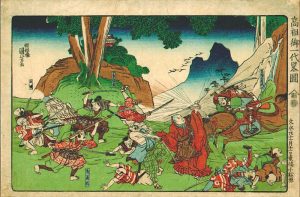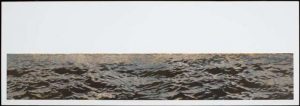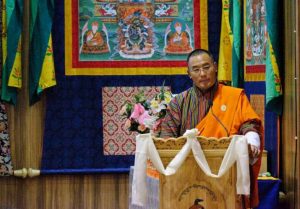
We live in a step-down world. We live on a canvas, a projector screen. Our only spiritual problem and spiritual journey is to experience and identify with the paint that creates the pictures on that canvas, whether it is horrific or a thing of beauty. We need to recognize the lights that are projecting this wonderful movie onto the screen of experience, be they terrifying or joyous. We need only recognize the source of this matrix of phenomena—the basis of the personal self, the world around, other people, atoms, lampshades, cups of coffee, sunbeams. The more we re-identify with that reality, the more our mundane experience becomes suffused with clarity, vibrancy, awe. And compassion for the blebs of awareness trapped in a misperception of objects, activities, and identities.
To help us accessthat non-local non-place, a bridge is a tremendously helpful tool. A portal, some kind of touchstone, that is a pure reflection of original awakeness—bodhi—will do. In Himalayan Buddhism and Hindu tantra, we use a deity as that doorway. Constant repetition of one’s connection to that pure representation, that deity form, sound and mind, habituates our body, speech, and thought to the experience of the manifest world as a playful hologram, emanating from primary purity.
Life takes on a special vibrancy, where every molecule is alive and speaking its unique voice. All is self-liberated, knowing its own origin. The world itself awakens. And at death, the habit of jumping into that portal bears its final reward, and even the bridge can be abandoned as we step into What Is. There is no “dissolution of ego” or any other funny ideas, as there is nothing to dissolve, nor anything that has ever been solid or separate. Then, whether we live in times of pandemic, war or peace, heavens or hells, gods or demons, neither hope nor fear can obstruct the blissful-awareness-ground of all.
See more
Related features from BDG
Dangerous Dharma
Creative Dharma
A Journey Through the Guru’s Name Mantra












